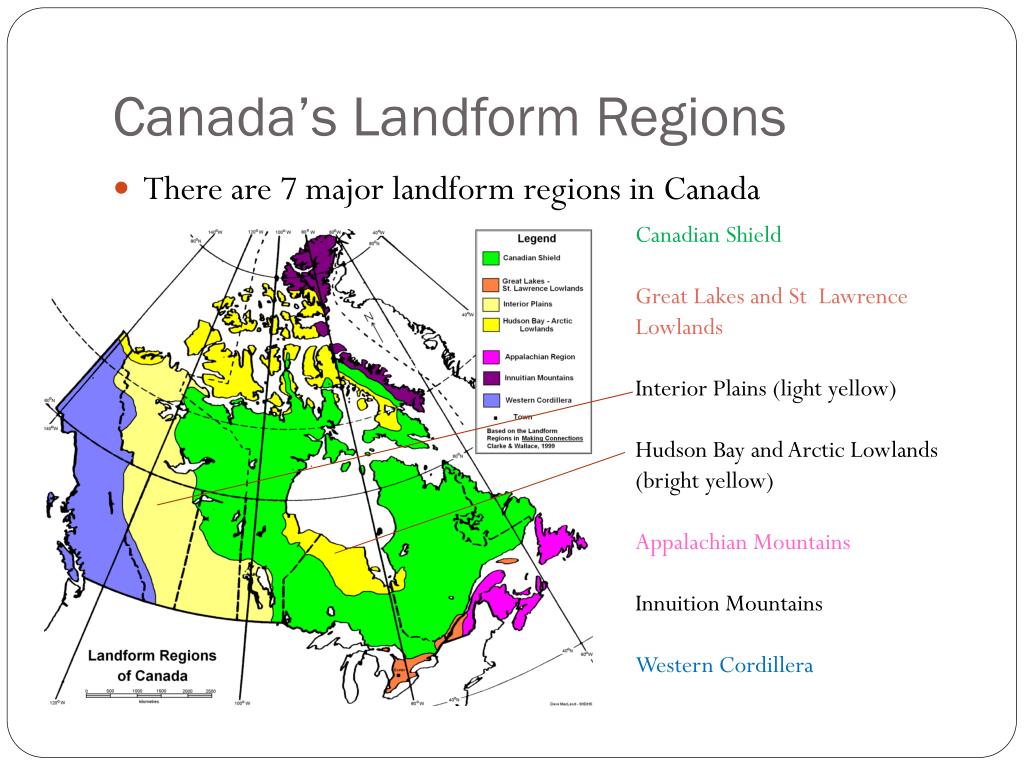
PPT Canada’s Landforms PowerPoint Presentation, free download ID
Canada, encompassing 9,984,670 km 2 (3,855,100 mi 2), is bordered by three oceans: the Atlantic to the east, the Pacific to the west, and the Arctic to the north. It shares the world's longest binational land border with the United States to the south and northwest.Canada, from west to east, is divisible into seven primary geographic regions: . Western Cordillera: The Western Cordillera region.
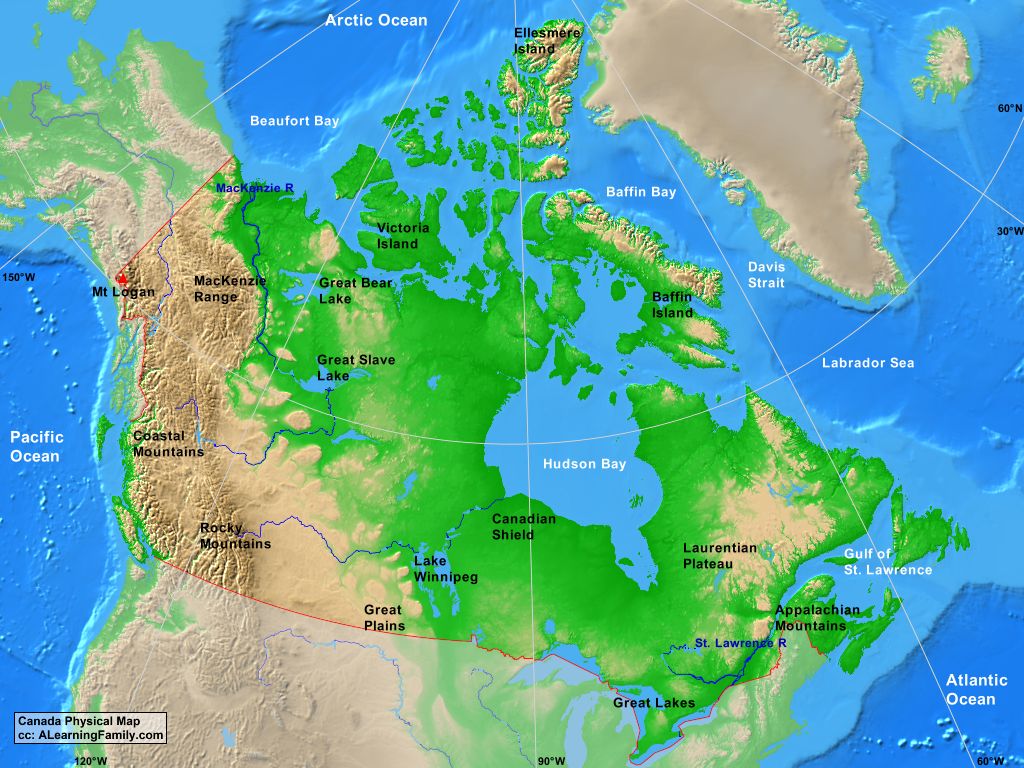
Canada Physical Map A Learning Family
List of landforms of Canada
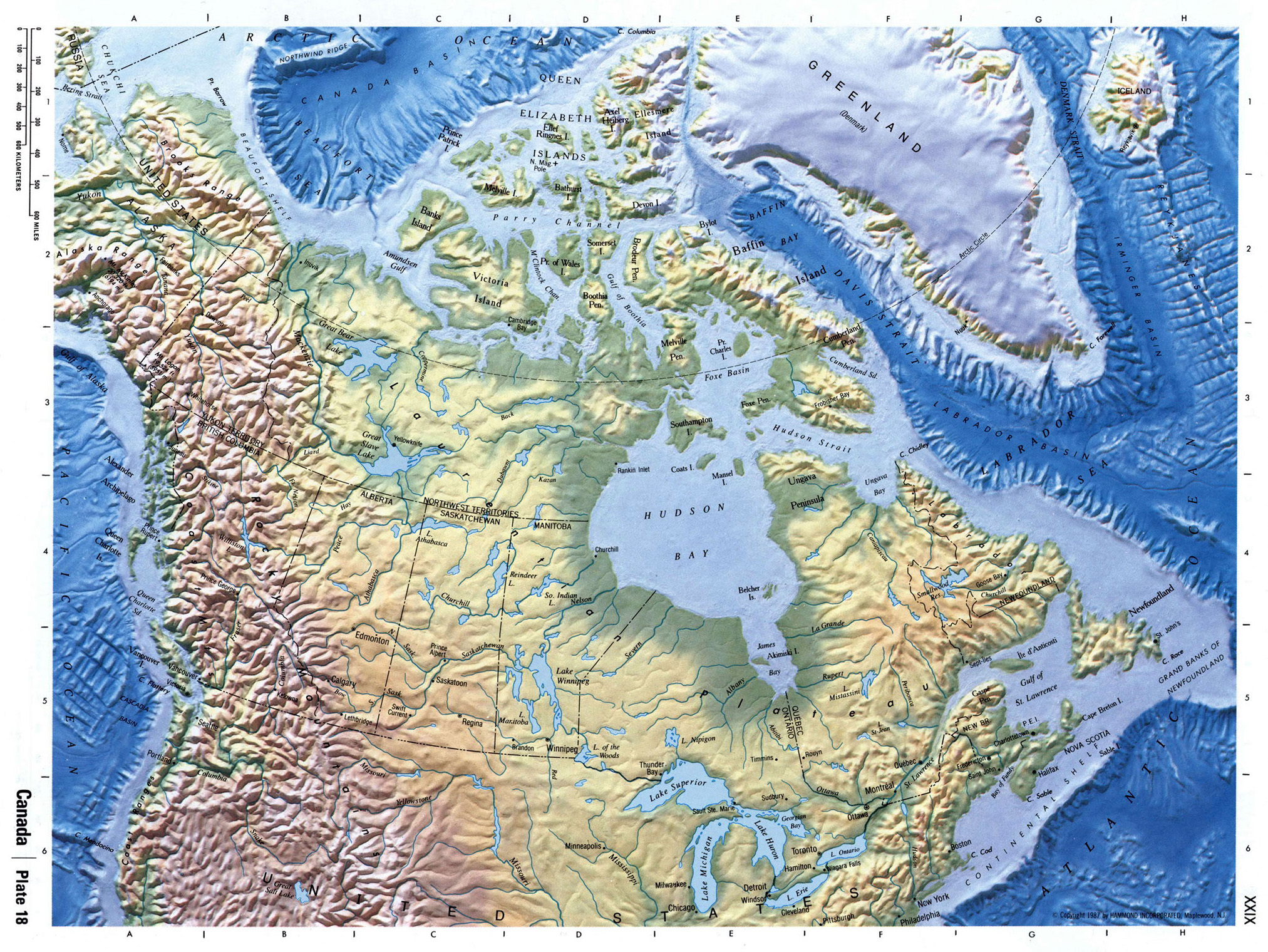
Detailed physical map of Canada Canada North America Mapsland
Canada's Landform Regions. Take a look through this story map to explore your landform region!
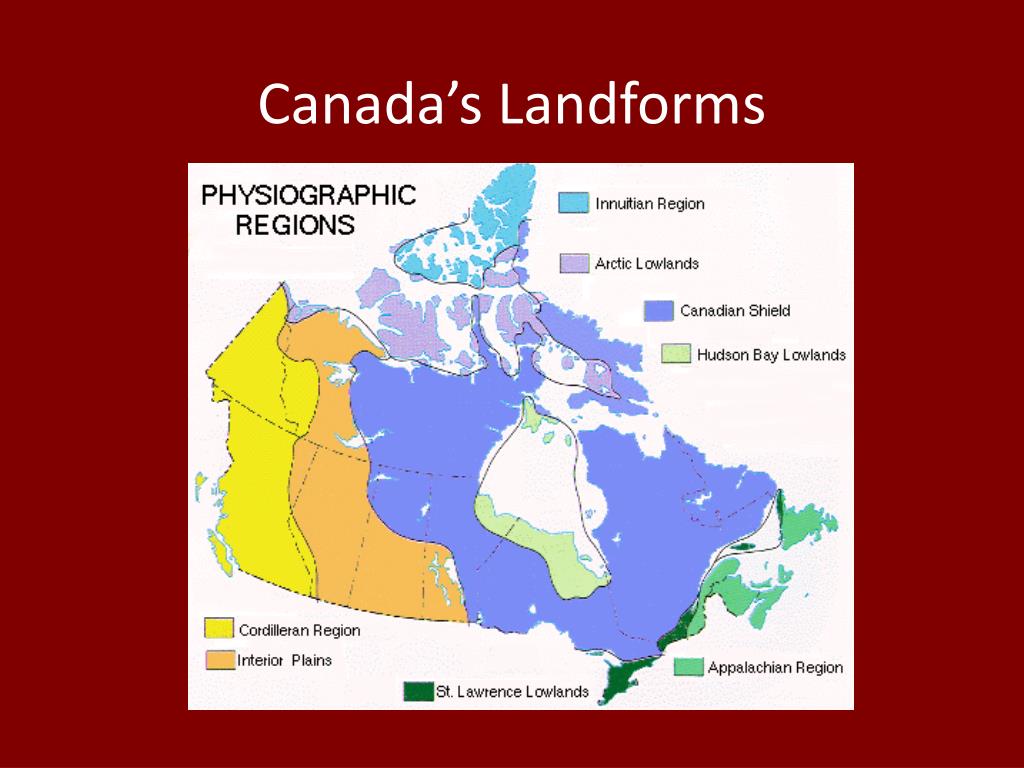
PPT Canada’s Landforms PowerPoint Presentation ID339613
Physiographic Regions of Canada are now available as an interactive map. Canada's landmass is very diversified and comprises several distinctive areas, called physiographic regions, each of which has its own topography and geology.. Physiographic regions are large areas that share similar relief and landforms shaped by common geomorphic.
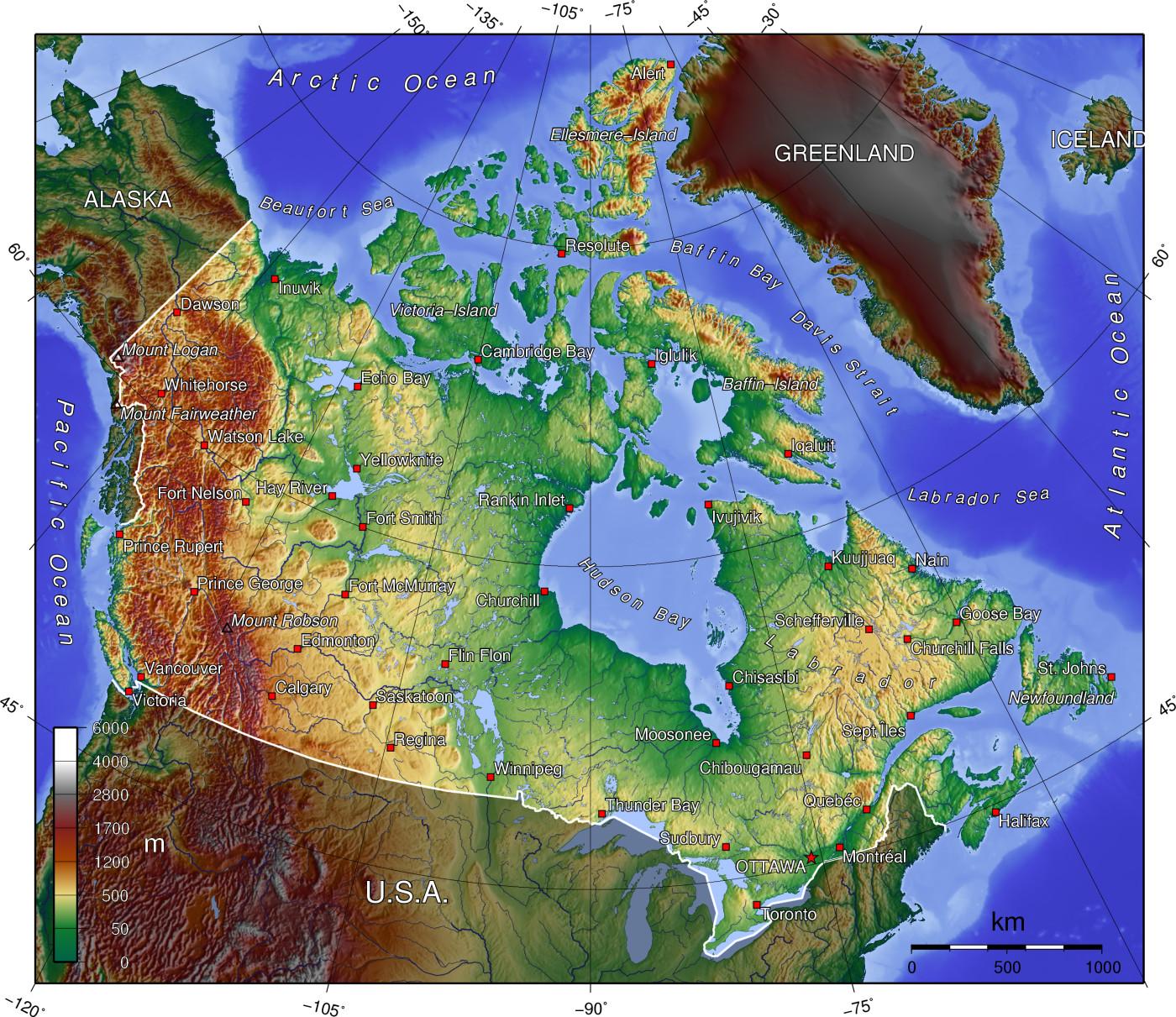
Geographical map of Canada topography and physical features of Canada
Topographic map coverage of Canada is based on the National Topographic System (NTS). These maps depict in detail ground relief (landforms and terrain), drainage (lakes and rivers), forest cover, administrative areas, populated areas, transportation routes and facilities (including roads and railways), and other man-made features.
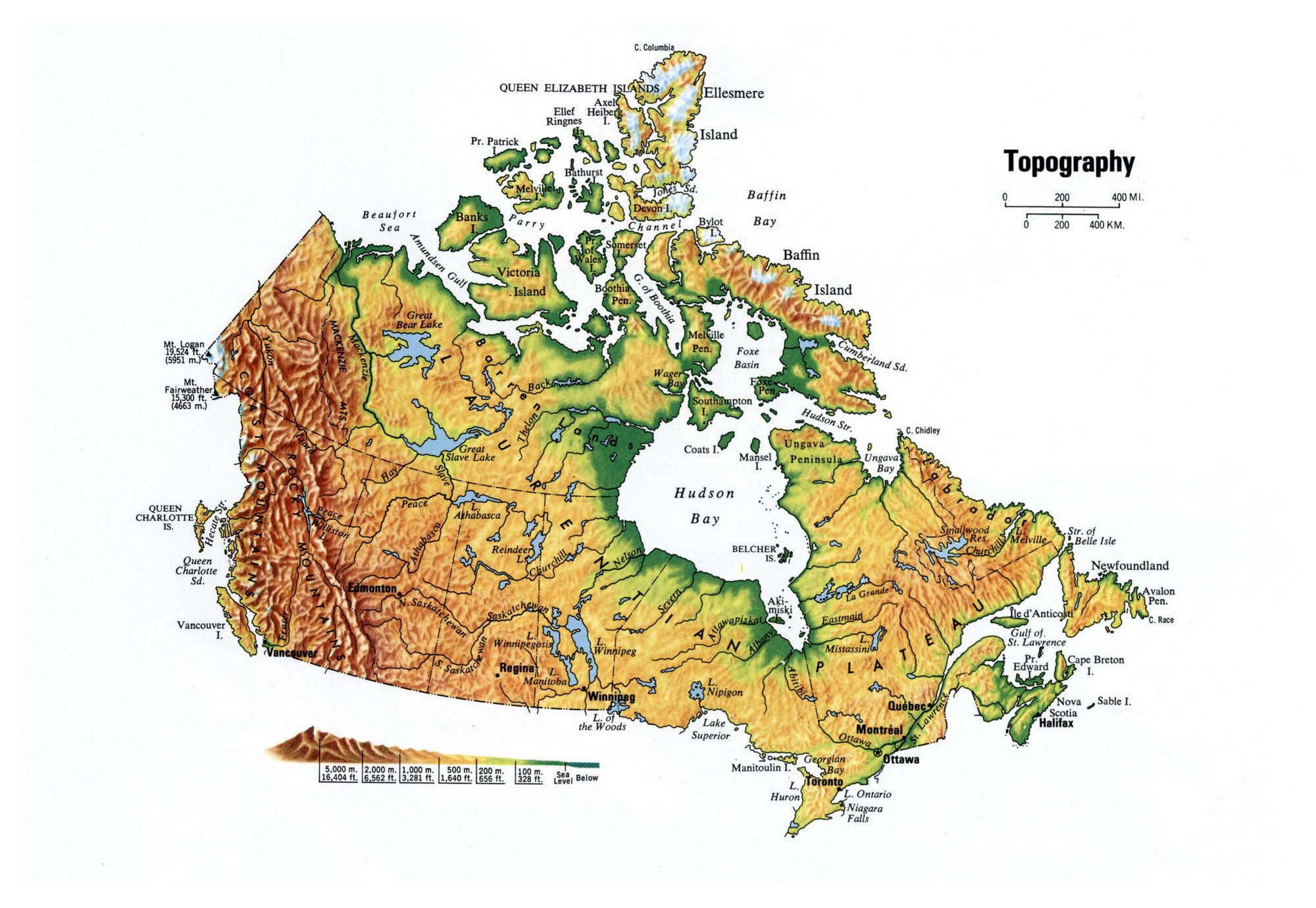
Physical Map Of Canada Labeled
Fjords of Canada; Glaciers of Canada. Great Lakes; Mountain peaks of Canada. Appalachian Mountains; Pacific Cordillera; List of mountains in Canada; List of volcanoes in Canada; Prairies of Canada; Rivers of Canada; List of islands of Canada; List of lakes in Canada; Extreme points of Canada; List of waterfalls in Canada; Valleys of Canada.
7. Landform Regions 1 CGC 1D Old Site
The Arctic Lands cover 26% of Canada, with most of the land being Nunavut, and covering 2.6 million km2. What rock type is it made of? The Arctic Lands are mostly made from sedimentary rocks and found mostly in plains, uplands and hills.
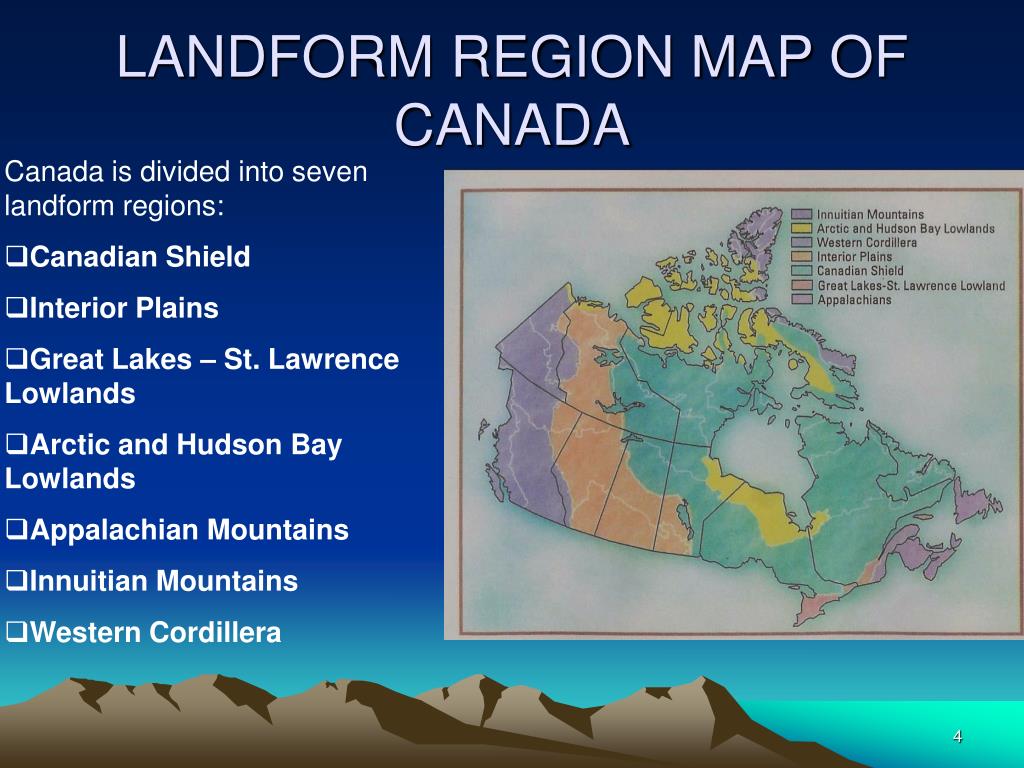
PPT LANDFORM REGIONS IN CANADA PowerPoint Presentation, free download
Canada's landscape is very diversified and comprises several distinctive areas, called physiographic regions, each of which has its own topography and geology. This map shows the location of these physiographic regions, including their subregions and divisions. These are the physiographic regions of Canada: Canadian Shield; Hudson Bay Lowland

Major Landforms of Regions in Canada Video & Lesson Transcript
Badlands are dramatic landforms characterized by a network of deep, narrow and winding gullies, along with occasional hoodoo rocks. Their steep, barren slopes provide striking evidence of the force of erosion by wind and water — a source of continual change in their terrain.
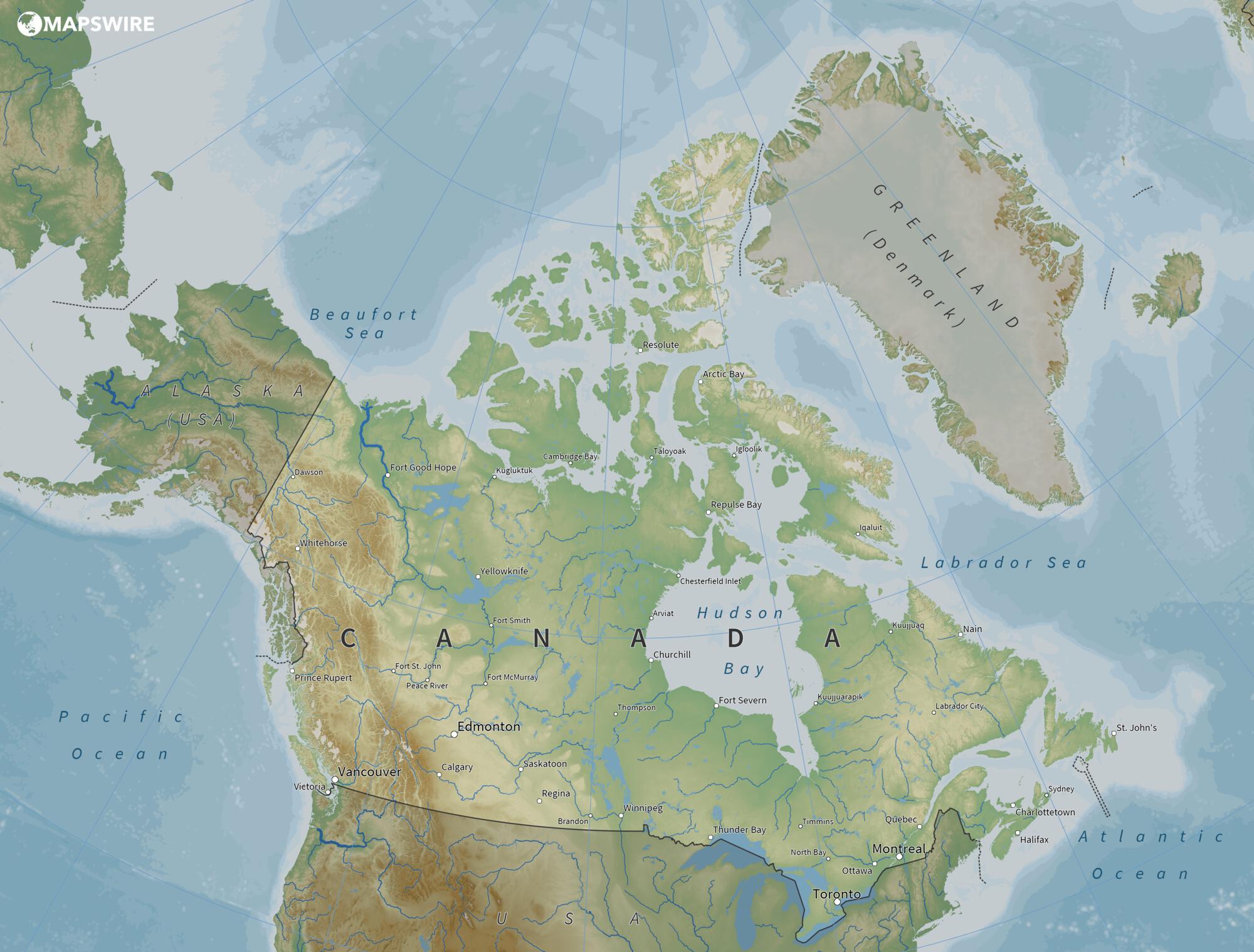
Geographical map of Canada topography and physical features of Canada
Canadian Shield, one of the world's largest geologic continental shields, centered on Hudson Bay and extending for 8 million square km (3 million square miles) over eastern, central, and northwestern Canada from the Great Lakes to the Canadian Arctic and into Greenland, with small extensions into the northern U.S.
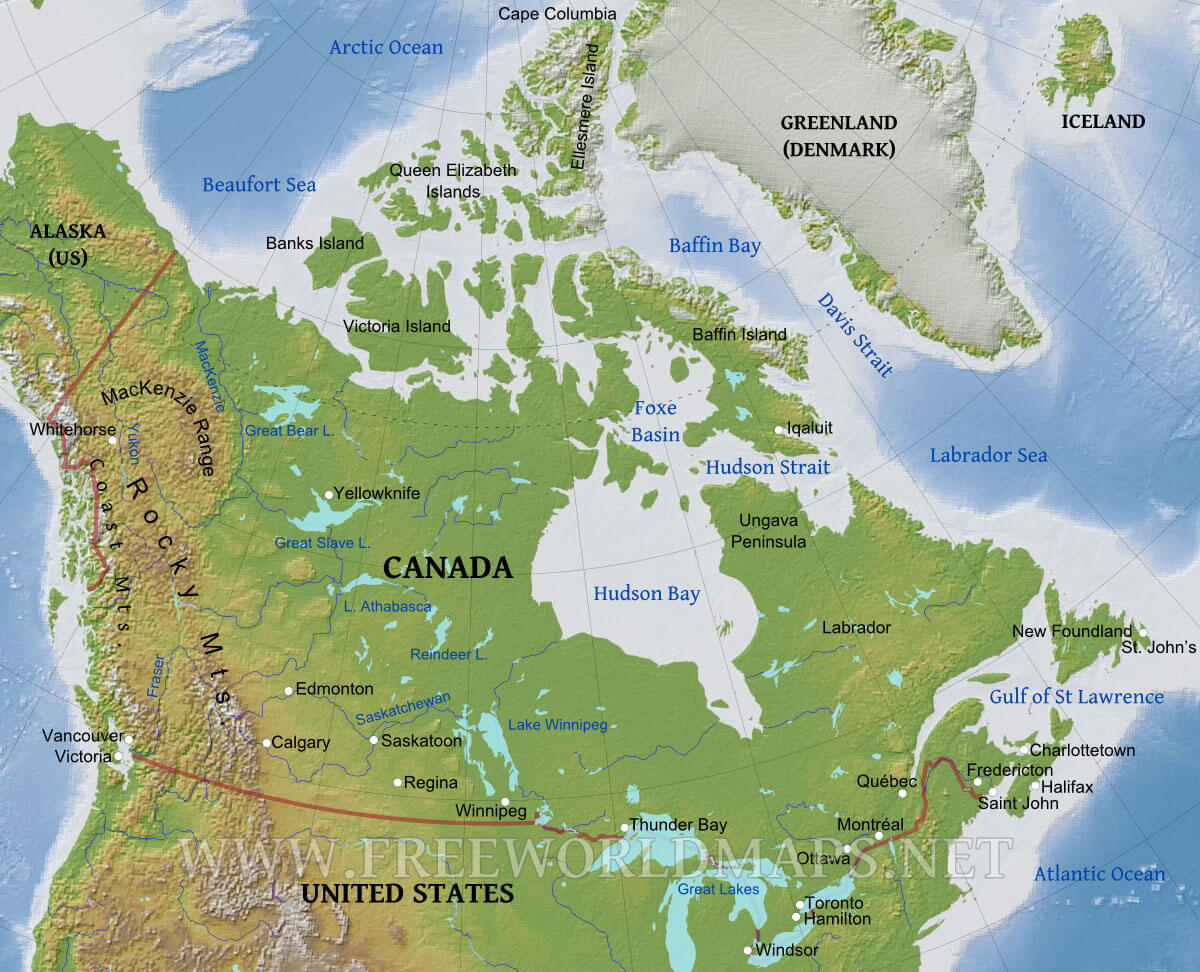
Printable Map of Canada Printable Canada Map With Provinces
Create an elevation profile of the landform regions of Canada in this interactive map.. Elevation Profile of Landform Regions of Canada: description: Explore Canada's landform regions through this interactive map. type: Web Mapping Application: tags:
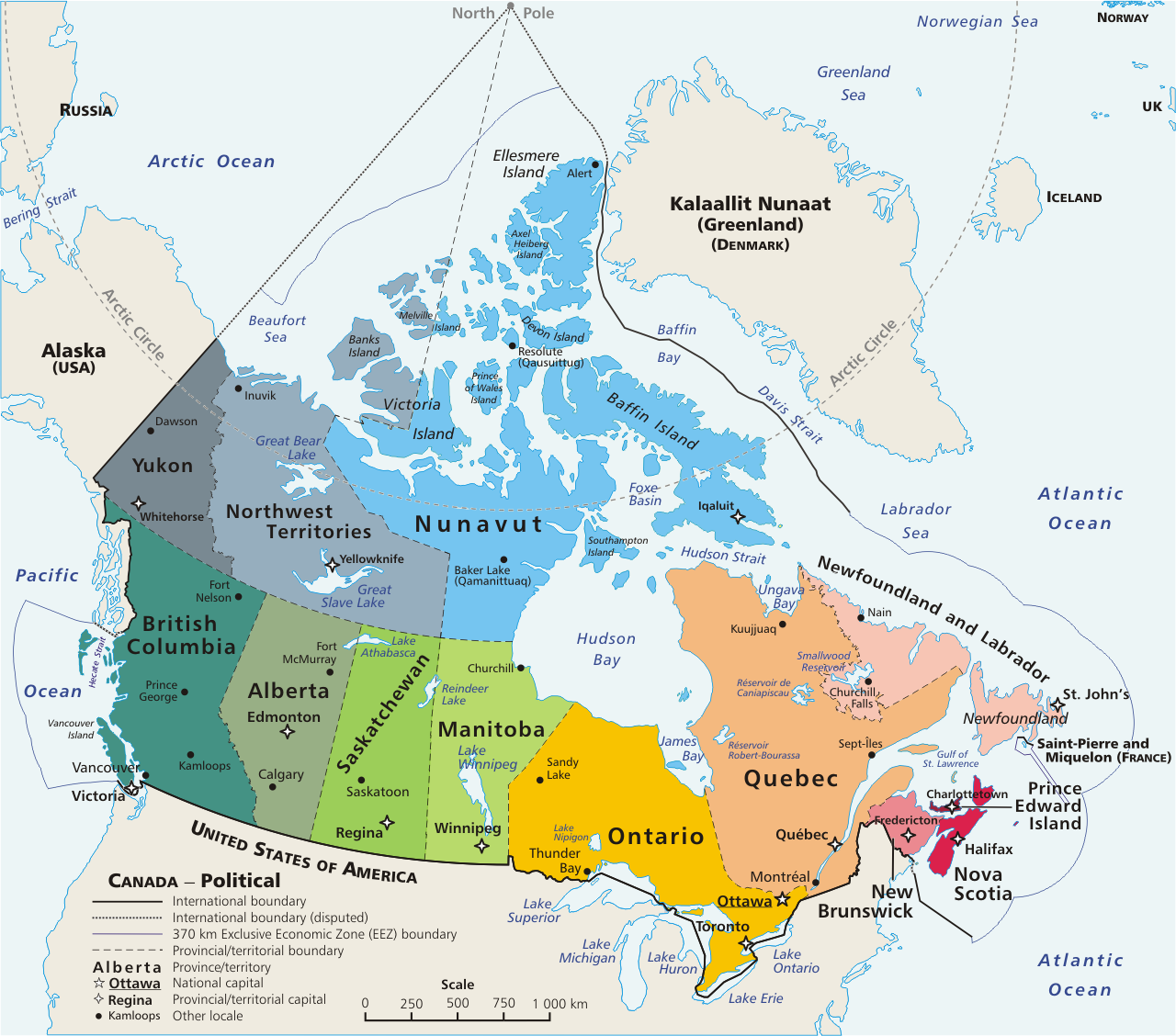
Geography of Canada Wikipedia
Canada is a large nation with varied natural features, including many mountains and forests. Learn about the major landforms of Canada's different regions, exploring the Cordillera, the Canadian.
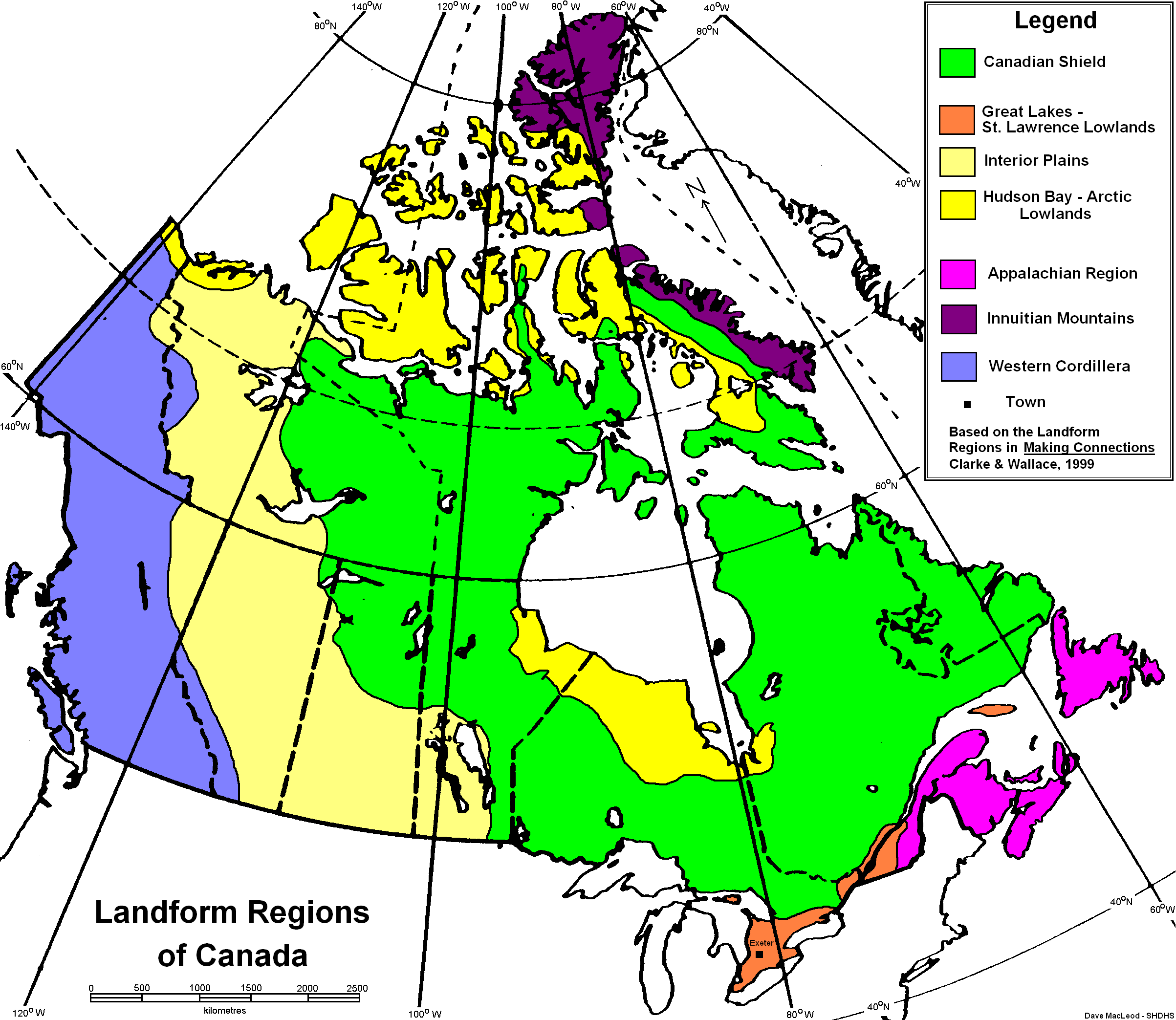
Western Cordillera Landform Region Western Cordillera What is it?
Central Canada. Central Canada, containing the country's two largest provinces, Ontario and Quebec, is part of a massive geographic land formation known as the Canadian Shield that gives much of the country its distinctive shape. Scooped out by the giant Hudson Bay to the north and bordered by four of the five Great Lakes — Lake Superior, Lake Huron, Lake Erie, and Lake Ontario — to the.
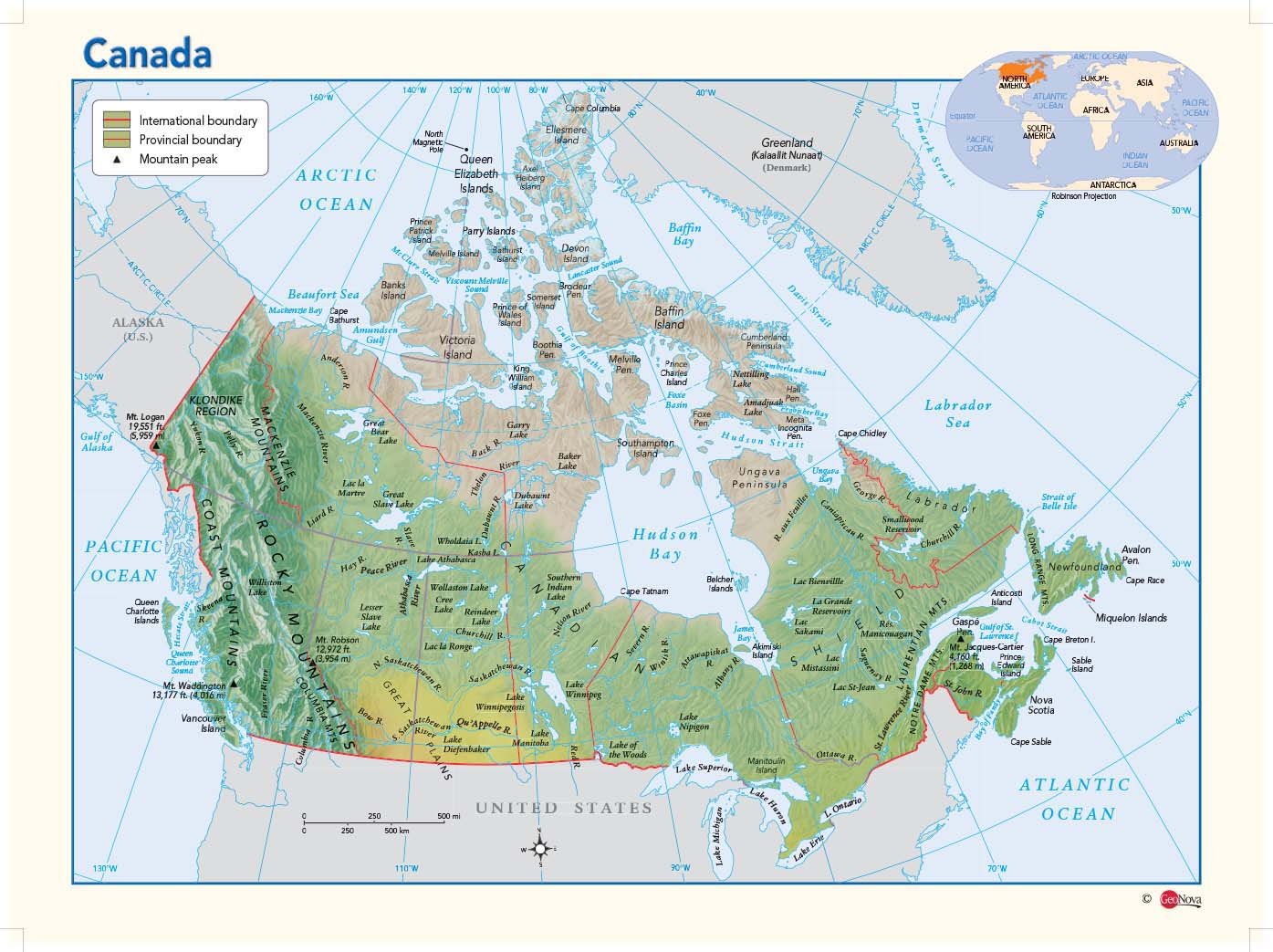
Canada Physical Wall Map by GeoNova MapSales
Canada's Arctic is located north of the Arctic Circle and comprises 2.1 million km 2 (21 per cent of the country's land area). The Arctic is Canada's most complex physiographic region, in part because it overlaps with other regions, namely the Canadian Shield, Western Cordillera and Interior Plains. These three regions of overlap may be.
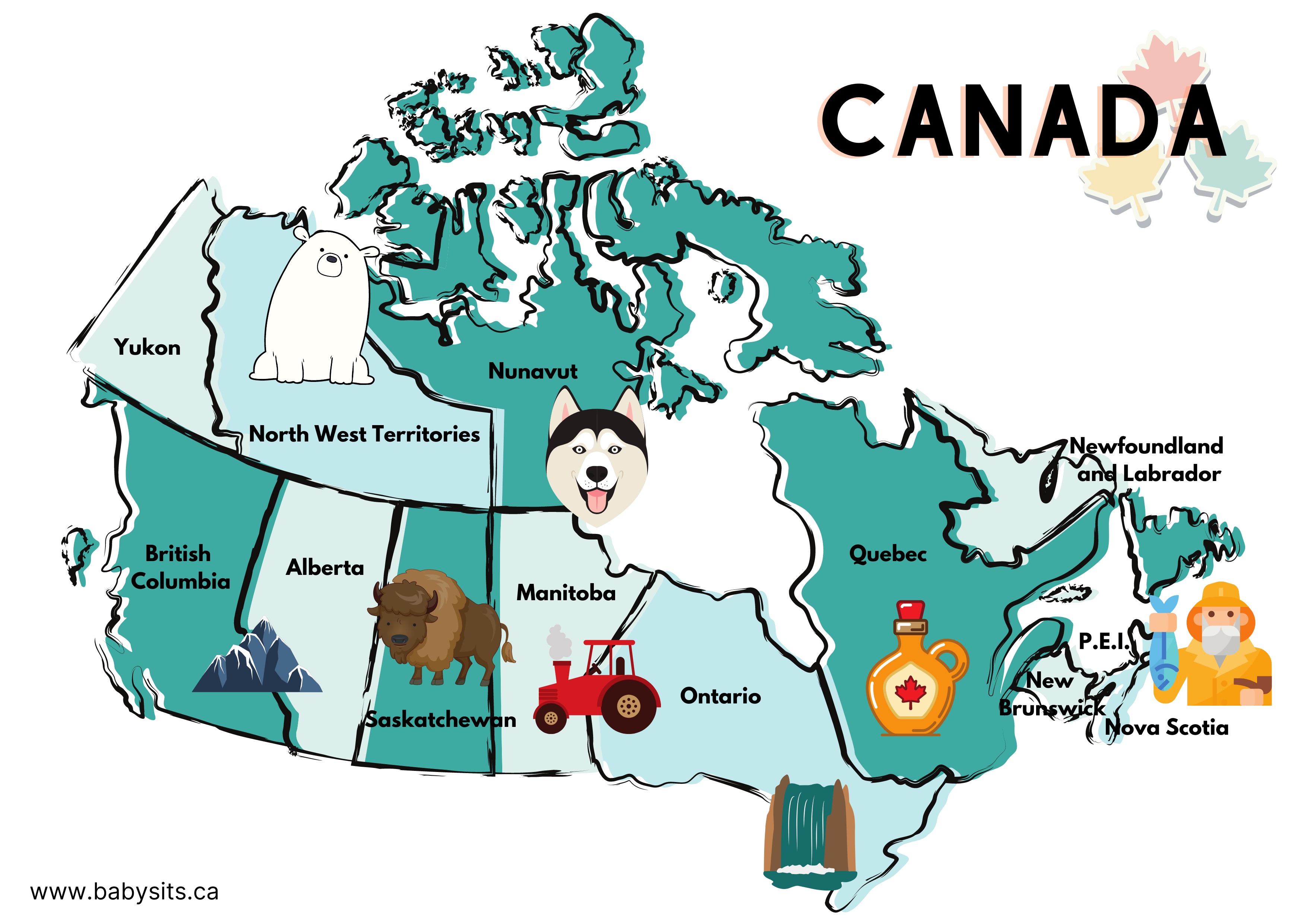
Map of Canada for Kids (free printable), Facts and Activities
This topographical map of Canada will allow you to discover landforms and geographical of Canada in Americas. The Canada topographic map is downloadable in PDF, printable and free. Canada topography is dominated by the Canadian Shield, an ice-scoured area of Precambrian rocks surrounding Hudson Bay and covering half the country.
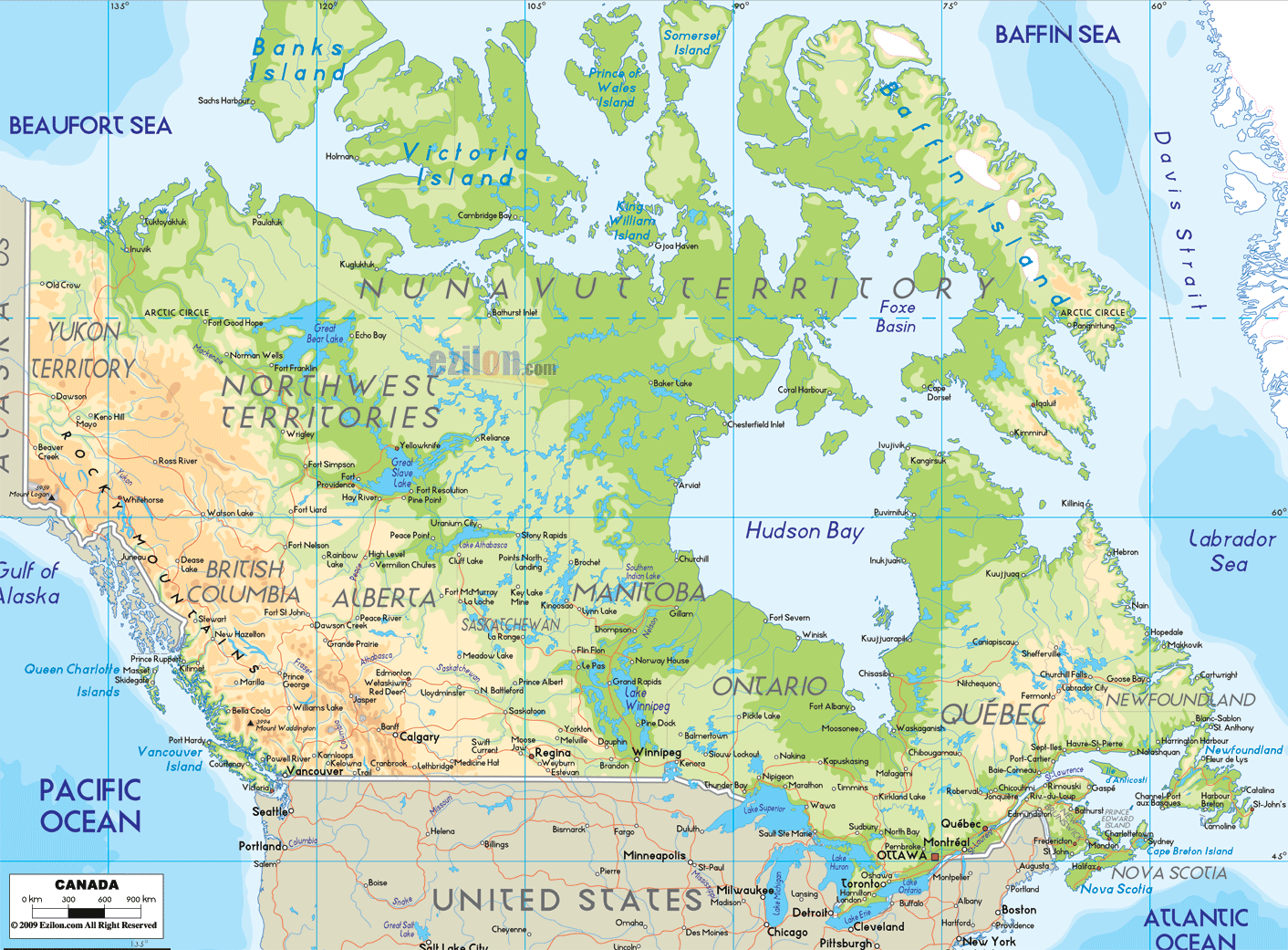
Physical and Geographical Map of Canada Ezilon Maps
Canada - Relief, Geography, Landforms: Canada contains within its borders a vast variety of geographic features. In general, the country's landform structure can be considered as a vast basin more than 3,220 miles (5,200 km) in diameter. The Cordillera in the west, the Appalachians in the southeast, the mountains of northern Labrador and of Baffin Island in the northeast, and the Innuitian.